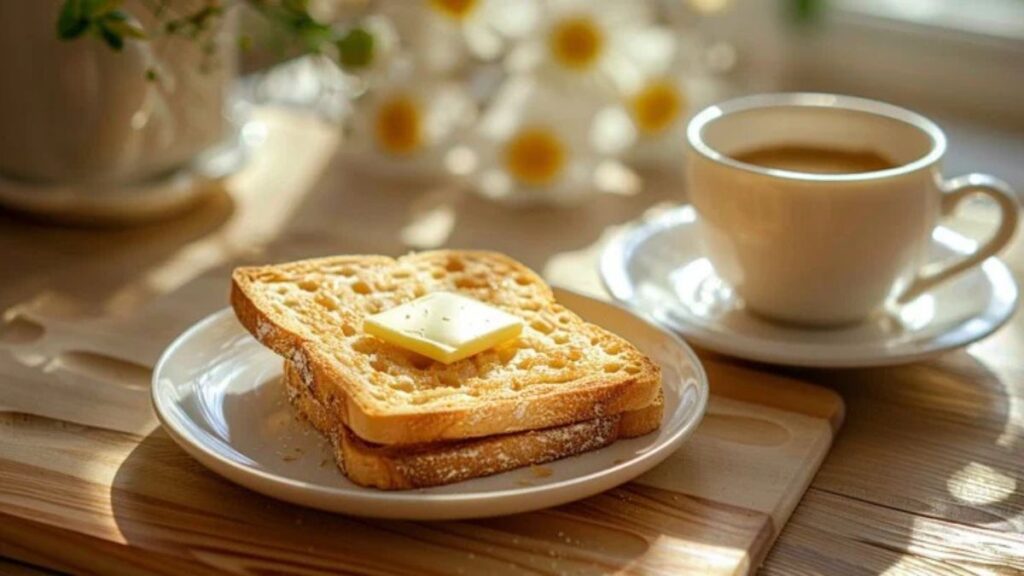There’s something deeply ritualistic about breakfast. The clink of a spoon against a ceramic mug. The comforting aroma of toasted bread wafting through the kitchen. The first sip of coffee that jolts your senses into the waking world. And somewhere in this sacred morning medley, a new player has emerged—not as a substitute, but as a star: Toastul.
The Rise of Toastul: Not Just Another Toast
To call Toastul just another breakfast trend would be a disservice. This isn’t sourdough redux or a redux of avocado-mania. Toastul is the evolution of toast as we know it—a creative, culturally fluid, nutritionally empowered phenomenon that redefines how we approach the first meal of the day. It’s not just a food. It’s a philosophy. A canvas. A movement.
But what exactly is Toastul?
Think of it as modular toast artistry. At its core, Toastul embraces the humble slice of bread but elevates it through smart combinations, global ingredients, and an aesthetic appeal designed for both your tastebuds and your Instagram feed. Unlike traditional toast, which tends to stick with single toppings, Toastul celebrates stacking, layering, and infusing textures. Sweet meets savory. Classic meets avant-garde. And the results are anything but ordinary.
The Anatomy of a Toastul Creation
Creating a Toastul isn’t just about slathering jam or melting cheese. It’s a multi-sensory experience that involves taste, nutrition, and visual appeal. Here’s what sets a Toastul apart:
1. Base Matters
Toastul starts with intention. Sourdough, brioche, rye, multigrain, or even a gluten-free cauliflower base—it’s all about matching the bread to the desired profile. Sourdough offers tang and crunch. Brioche brings buttery decadence. Rye lends earthiness.
2. Spread Layer
Here, Toastul pulls from every corner of the globe: labneh infused with za’atar, honey miso butter, beetroot hummus, cashew ricotta, or Korean gochujang mayo. This layer is about introducing complexity from the first bite.
3. Main Toppings
Not just eggs or avocados. We’re talking preserved lemons with whipped goat cheese, blistered cherry tomatoes with basil oil, even spicy sardines with capers and microgreens. Vegetarians, carnivores, vegans, and flexitarians alike find their version of breakfast paradise.
4. Finishing Touches
Crispy shallots. Pickled radish ribbons. Edible flowers. Maldon sea salt flakes. A whisper of truffle oil. These details crown the Toastul with flair.
5. Structure and Presentation
Unlike stacked burgers or overloaded wraps, Toastul maintains architectural integrity. Each element is chosen not just for taste, but for aesthetic layering. It’s edible architecture that belongs on a mood board as much as a breakfast table.
The Cultural Mosaic of Toastul
Toastul didn’t come from a corporate test kitchen. It bubbled up from home chefs, design-conscious food bloggers, and nutrition-forward urbanites. It lives at the intersection of global fusion and morning mindfulness. In Tokyo cafés, you might find matcha custard Toastul with black sesame crumble. In Copenhagen, Toastul wears a minimalist look—smoked trout, cucumber ribbons, dill oil, served on dense rye.
In Brooklyn, it might lean nostalgic—peanut butter, bananas brûléed with a torch, a dusting of cinnamon, and tahini drizzle. Meanwhile, in Melbourne, expect something like roasted pumpkin, whipped feta, dukkah, and a fried egg with a yolk like liquid sunshine.
Toastul adapts because it isn’t rigid. It’s a genre, not a recipe.
Breakfast in the Age of Aesthetic Nutrition
In a world where food is both fuel and identity, Toastul hits a sweet spot. It allows people to eat mindfully, create art, and personalize their experience. It’s breakfast, yes—but it’s also self-expression.
Enter: Aesthetic Nutrition
This isn’t about counting calories. It’s about feeding the body and the eyes. The new generation wants meals that pop on social media, yes, but they also crave clean, nourishing ingredients. Toastul doesn’t hide behind additives or heavy sauces. It’s transparent in form and function.
Whether you’re a keto warrior or plant-based yogi, Toastul accommodates. Almond flour toast with crushed avocado and turmeric pickled onions? Sure. Vegan cream cheese with blueberries and chia-honey drizzle? Absolutely.
Why the World Fell in Love with Toastul
Toastul didn’t ask for fame. It earned it. Here’s why the movement exploded:
1. Simplicity Meets Sophistication
It’s not hard to make—but it feels luxurious. With minimal ingredients, you can create something gourmet.
2. Endless Customization
Toastul can be sweet or savory, heavy or light, traditional or inventive. It adapts to dietary needs and moods.
3. Aesthetic Value
It photographs beautifully. In a visually driven culture, Toastul is food that commands attention.
4. Functional Eating
People are tired of choosing between flavor and function. Toastul offers both—taste and health in a single bite.
Toastul at Home: Your Ultimate Starter Guide
Ready to craft your own Toastul? Here’s a guide to get started.
✦ The Basics:
-
Bread Base: Choose high-quality bread—your base is your foundation.
-
Toasting Technique: Golden, not burnt. A bit of butter or olive oil in the pan goes a long way.
-
Balance: Sweet and salty? Crunch and creaminess? Aim for contrast.
✦ Toastul Recipes to Try
🥑 Green Goddess Toastul
-
Sourdough
-
Avocado mash with lemon & chili flakes
-
Poached egg
-
Arugula microgreens
-
Pumpkin seeds
-
A drizzle of tahini
🍓 Berry Bliss Toastul
-
Multigrain toast
-
Whipped ricotta
-
Fresh strawberries and blueberries
-
Honey drizzle
-
Crushed pistachios
🐟 Nordic Noir Toastul
-
Rye toast
-
Cream cheese + dill
-
Smoked salmon
-
Pickled red onions
-
Capers
-
Micro fennel
🌱 The Plant Power Toastul
-
Gluten-free sweet potato toast
-
Cashew cream cheese
-
Roasted chickpeas
-
Spiced beet slaw
-
Fresh mint
The Business of Toastul: Trend or Legacy?
If you think Toastul is just a passing Instagram moment, think again. Major cafés and breakfast bars are already incorporating dedicated Toastul menus, often priced at a premium. Boutique hotels are serving customized Toastul boards. And entire cookbooks are being penned around it.
Entrepreneurs are jumping in—meal kit services now offer Toastul ingredient boxes. Influencers use the hashtag #Toastul to drive engagement. There’s even talk of a “Toastul Bar” pop-up series where people build their own slice.
According to food trend analysts, Toastul has the potential to follow the trajectory of avocado toast—only bigger. Why? Because it’s more versatile, more visual, and more inclusive. It isn’t about a singular ingredient; it’s about the idea of turning breakfast into a curated experience.
From Comfort Food to Culinary Movement
Toast has always had a nostalgic pull. It’s the bread your mom buttered on snow days. It’s the midnight snack you turned to during college. It’s safe, familiar.
Toastul, on the other hand, is the grown-up evolution of that comfort. It keeps the nostalgia but adds a dash of ambition. It says: what if we made breakfast smarter, more beautiful, and more intentional?
This isn’t about overcomplicating. It’s about transforming the ordinary into something quietly extraordinary.
The Future of Breakfast Is Toastul
As we barrel into a world where everything is customizable, from your skincare to your Spotify playlists, it only makes sense that breakfast follows suit. Toastul is breakfast’s answer to the build-your-own lifestyle.
It’s wellness without rigidity. Art without pretension. Innovation without sacrifice.
So tomorrow morning, skip the cereal box. Push aside the granola bar. Open the fridge, channel your inner Toastul artisan, and build a slice that tells your story. Whether you’re dressing up brioche with mascarpone and figs or going Nordic with rye and pickled beets, you’re not just eating.
You’re Toastuling.
And that’s how breakfast became a revolution.






